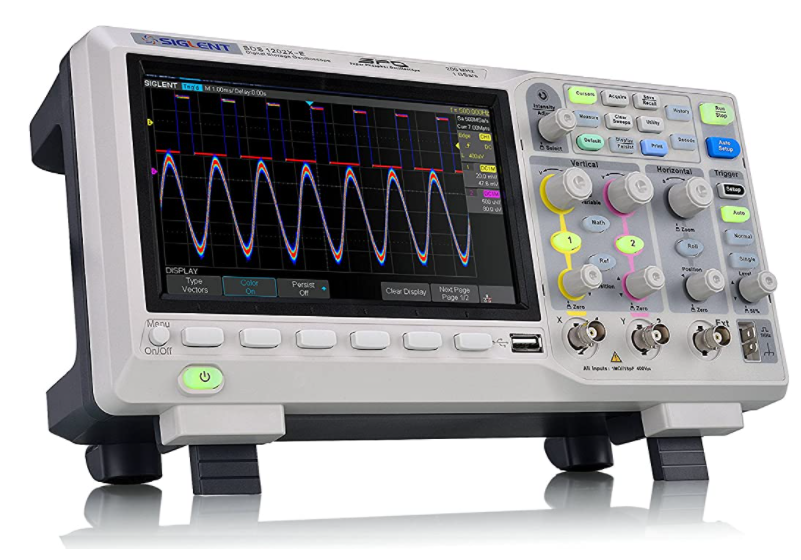
How to Build the Ultimate Electronics Lab
This is a guide for beginners who are looking to build their own electronics lab. It will provide you with the knowledge and tools that you need to get started, as well as provide some useful tips on how to get the most out of your lab. Ultimately, it depends on what you want to do with electronics. Do you want to build and test simple circuits? Do you want to build complex circuits and use them for practical applications? Do you want to build your own printed circuit boards? It can all seem overwhelming at first, but we’ll help you identify what we think you should have in your lab all for under $1100! We’ll also provide some example projects that you can make if you have all the equipment listed in this guide.
Disclaimer
ProteShea, LLC is a participant in the Amazon Services LLC Associates Program, an affiliate advertising program designed to provide a means for sites to earn advertising fees by advertising and linking to Amazon.com
Some links may be affiliate links, in which ProteShea, LLC earns a commission if you use that affiliate link. Please note that this is at no additional cost to you and helps us in creating more content.
Power Supply - $75
Every lab needs a power supply to power your circuits. There are tons of options to choose from, but I usually look for an adjustable supply with a voltage range from 0 – 30VDC and a current range from 0 – 10A. The fixed options are much cheaper, but they are limited to a single output voltage that cannot be adjusted.
An adjustable supply will power just about any circuit since common voltages are 3.3V, 5V, 12V, 24V, and 28V. The max current of 10A will power most circuits due to their low power. However, you might exceed that if you’re trying to power a few motors.
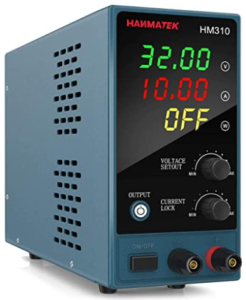
Adjustable DC Power Supply
- 0 – 30VDC with 0.01 voltage resolution
- 0 – 10A with 0.001 current resolution
- Overvoltage, overcurrent, over-temperature, and short-circuit protection
- LED display
Function Generator - $106
Function generators are a must if you’re trying to simulate an input signal to your circuit to characterize it. This is extremely helpful if you don’t have the sensor or feedback to provide a signal for you. You can generate different types of waveforms such as square, sine, pulse, triangular, or sawtooth with a certain frequency, amplitude, duty cycle, and offset.
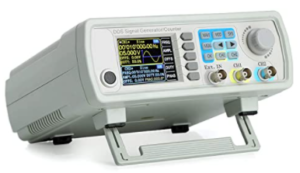
Dual-Channel Function Generator
- Frequency output up to 15MHz
- Sine, square, triangle, sawtooth, and pulse wave
- Save up to 60 user-defined waveforms
- LED display
Oscilloscope - $379
Oscilloscopes are one of the most important instruments to have if you’re designing and building electronics. They help you visualize what the signals in your circuit are doing as they measure and display voltage over time. You can measure frequency, amplitude, rise time, and differential signals, to name a few. Be sure to check out our Buying Guide to know what to look for.
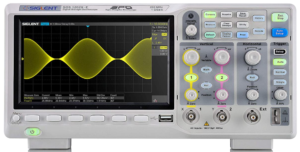
Siglent Technologies SDS1202X-E 200MHz Digital Oscilloscope
- 100 MHz – 200 MHz
- 2+EXT Channels
- 14 Mpts Record Length
- 1 GSa/s sample rate
Microscope - $355
Having a microscope is optional, but it has proved to be invaluable if you’re soldering on components for printed circuit boards. Since components keep getting smaller, they get harder to hand solder and are notorious for creating shorts between two pins. I don’t know about you, but my hands aren’t that steady! Before you start testing your PCB, it can be worthwhile to put it under the microscope to check for shorts between two adjacent pins that could damage the component.
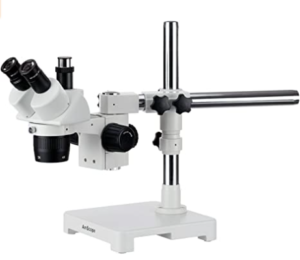
AmScope Trinocular Stereo Microscope
- 20x/40x/80x magnification
- Single-arm boom stand with 8″ vertical working distance and 16″ horizontal adjustment
Soldering Iron and Solder - $58 - $120
If you plan on soldering components to build printed circuit boards, you’ll definitely need a soldering iron and solder. Similar to the power supply, the iron can have a fixed or adjustable temperature. Of course, the adjustable ones are more expensive, so people on a budget often go with a fixed temperature. This is not ideal, however, because the tip is always on and stays hotter than it needs to be. This allows oxidation to build up quickly which makes soldering much harder.
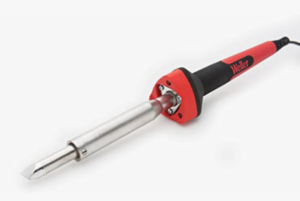
Fixed Soldering Iron
- 80W, up to 900 degrees F
- 5-piece accessory kit which includes rosin flux, lead-free solder, flux brush, brass-wire cleaner with silicon holder
With an adjustable soldering iron, you can set the temperature to match the melting point of the solder you’re using. This is also beneficial if you want to protect your heat-sensitive components. Also, the tip won’t oxidize as fast because it won’t always be on – the heating element switches on just enough to maintain a set temperature when the iron is not being used, and then turns off when the set temperature is reached.
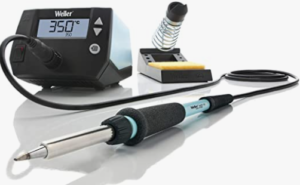
Weller Digital Soldering Station
- 70W, adjustable up to 850 degrees F
- +/- 4 degree F temperature stability
- 5-piece kit brass-wire cleaner
Breadboard - $12
Breadboards are necessary to prototype your circuits. You always want to try to “breadboard” your circuit before building a printed circuit board so you know that it’ll work. These are perfect for through-hole components, but don’t work without an adapter board for surface-mount components. You’ll have to buy or make your own adapter board to be able to use a breadboard with them.
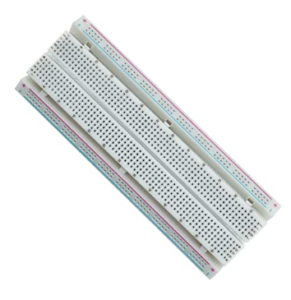
Solderless Breadboard Kit
- 400 point and 830 point breadboards
- Self-adhesive tape on the back
- Interconnect components with 20-30 AWG wire
Resistors, Capacitors, Inductors, LEDs - $70
These are some of the most fundamental components in electronics since every circuit will use them. It’s best if you buy a kit at first, and over the years, you’ll acquire them and have a big selection that you can use in your circuits. The kit below offers a variety of components.
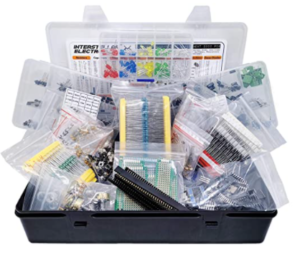
Electronic Component Assortment
- Includes 2200 pieces
- Resistors, transistors, diodes, zener diodes, ICs, crystal oscillators, PCBs, LEDs, mini switch, potentiometer, trim pots, LDRs, headers, and terminals
Integrated Circuits - $14
A good assortment of ICs will come in handy when you’re building circuits. Some common ICs that you should have are operational amplifiers, comparators, 555 timer, oscillators, and photocouplers.

Integrated Circuit Assortment Kit
- 40 pieces of 20 different ICs
- DIP packages can be used with a breadboard
- Photocouplers, timers, oscillators, operational amplifiers, comparators, audio amplifiers, current mode controller, darlington array, and voltage charge pump
- Comes with anti-static plastic box
Jumper Wires - $13
These are perfect for the circuits you build on your breadboard. They give you a quick and easy connection, and they also come in multiple colors and lengths. Another great thing is that they are pre-stripped so you don’t have to build your own!
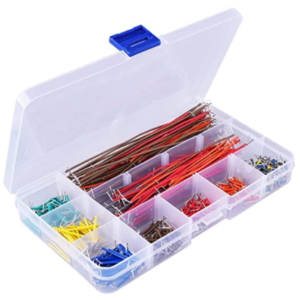
Jumper Wire Kit
- 14 different lengths ranging from 2mm to 125mm
- Comes with plastic box to keep jumpers organized
- Works well with breadboard
- Self-adhesive tape on the back
- Interconnect components with 20-30 AWG wire
Workbench - $269
Now that we’ve covered what you’ll need, you need a place to put all your new stuff! A nice workbench will be the finishing touch for your new lab. This will be the place where you build and test everything. You can even have multiple workbenches and designate each one for a particular task. For example, you could have one workbench where you do all the messy work such as building circuits and soldering. Your other bench could have your power supply, function generator, and oscilloscope.
However you decide to do build your lab is completely up to you. It will be exciting as you pick and choose what you need. You’ll be building and testing circuits in no time!
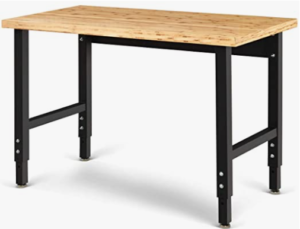
Adjustable Workbench
- Adjusts from 28″ to 48″ high and has a load capacity of to 1500 lbs.
- Top is made of solid bamboo wood
- Easily assemble with just an adjustable wrench
About Author
Eric Shea is the founder of ProteShea and is an electrical engineer. He wishes to have a major impact on bridging the gap between engineering theory and real-world applications. He has worked at Kratos Defense, SpaceX, Air Force Research Laboratory, and Polaris Industries. He received a M.S. in electrical engineering from the University of Pittsburgh and a B.S. in electrical engineering from the University of Florida.